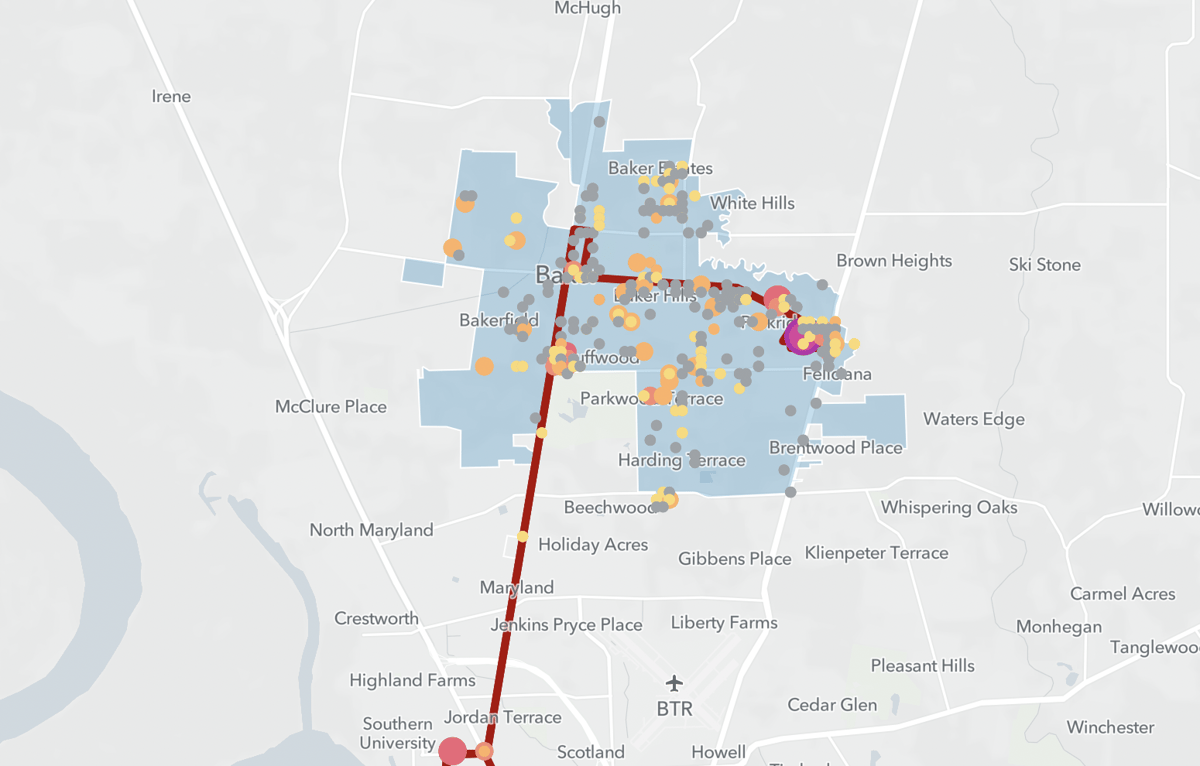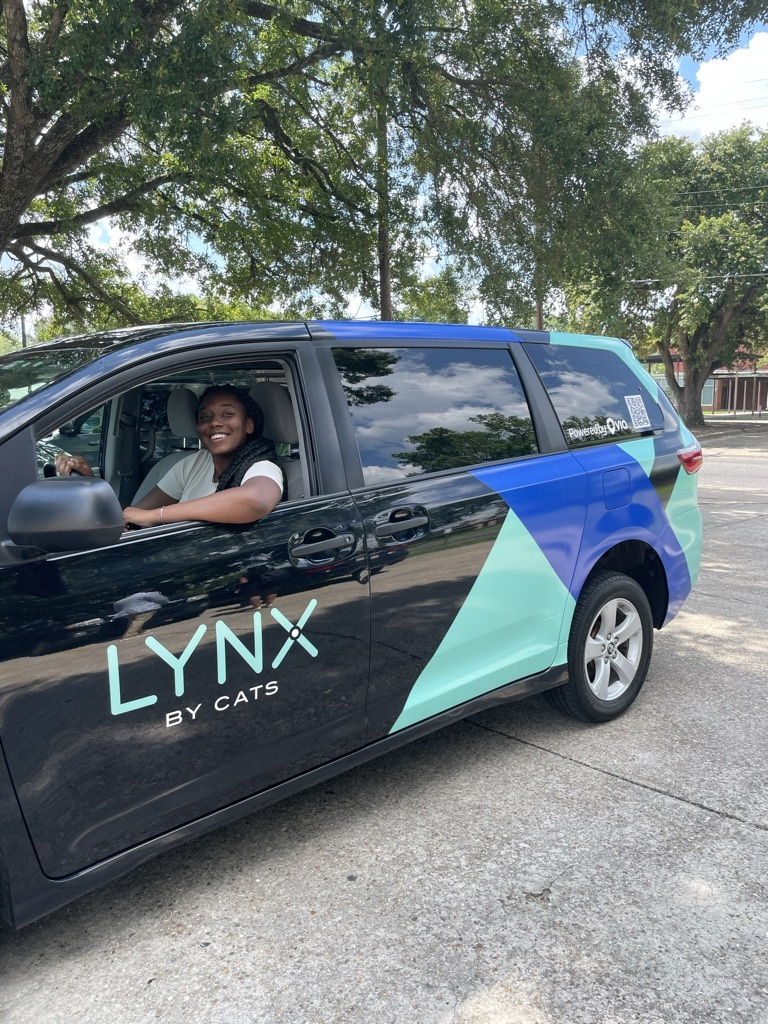Welcome to our Data-Driven Planning Lessons series, where we give you key takeaways on how cities are increasing transit accessibility by leveraging multiple types of data, including demographics, fixed-route ridership, on-demand mobility patterns, and beyond — all in one platform. Let’s get started.
For most residents of Baker, Louisiana — a town of 13,000 in the north suburbs of Baton Rouge — owning a car has long been necessary for accessing jobs, education, healthcare, and essential services. Capital Area Transit System (CATS), the transit agency serving the Baton Rouge area, were able to offer some fixed-route bus services, but low population density led to infrequent service, few riders, and ultimately service cancellations. Leaders at CATS were determined to offer an alternative to fixed-route service. Cheri Soileau, the Director of Planning and Programming at CATS, noted that while Baker is “not an urban area or downtown area that’s dense,” the town is “part of our system and we need to give them comprehensive service.” After exploring their options, CATS leaders settled on microtransit.
The new service, LYNX by CATS, launched in June 2022 to complement a redesigned Route 70, which offers connections to Southern University and Baton Rouge while incorporating part of the old Baker Circulator, which was recently canceled due to low ridership. LYNX offers on-demand service, bookable by app or phone, anywhere within Baker and to points of interest just outside of town: Southern University, the Scotlandville Transfer Center, the Exxon plant, and Lane Medical Center. CATS leaders are committed to keeping trips affordable — they are currently free — and riders wait an average of 11 minutes between request and pickup, making LYNX significantly more convenient for spontaneous trips than the fixed-route lines CATS had previously tried to run in the area.
LYNX has been an immediate success, delivering more than 10,000 rides since launch. Rides are requested from all over town — in the path of the old Circulator, and beyond — but especially concentrated at the Walmart and Baker Middle School to the east of town. And many riders take advantage of the service’s drop-off locations outside Baker’s borders, with trips concentrated at Southern University and Lane Medical Center.
Shown below: user the slider to view transit options in Baker before Via (Route 70 and the Baker Circulator), and after Via with most common pickup and drop-off locations plotted in Remix.

This article is one of a series of transit planning stories featuring how cities are transforming transit deserts with a new solution:
- Cities are transforming transit deserts with data-driven planning
- The key to successful transit planning: complement fixed routes
- In transit planning, on-demand is essential for low-density cities
- Filling the gaps in areas with limited or no transit options
- Microtransit fills in transit gaps to link this suburb to broader opportunities
![Copy of Copy of [Template] Before - After Thumbnail 2](https://39563058.fs1.hubspotusercontent-na1.net/hub/39563058/hubfs/Canva%20images/Thumbnail/Copy%20of%20Copy%20of%20%5BTemplate%5D%20Before%20-%20After%20%20Thumbnail%202.png?width=1251&height=820&name=Copy%20of%20Copy%20of%20%5BTemplate%5D%20Before%20-%20After%20%20Thumbnail%202.png)





%206.png?width=71&height=47&name=The%20Buzz%20Blog%20Hero%20(1750%20x%201200%20px)%206.png)